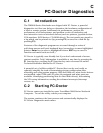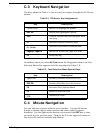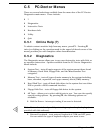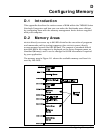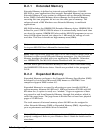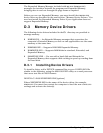
The Expanded Memory Manager included with MS-DOS (EMM386.EXE)
manages the interface between the program and Expanded Memory,
bringing data in and out through the page frame as required.
Before you can use Expanded Memory, you must install the
EMM386.EXE
device driver as described in the next section, “Memory Device Drivers.” You
need not install the Expanded Memory Driver if your application does not
support Expanded Memory.
D.3 Memory Device Drivers
The following device drivers included in the C:\ directory are provided to
manage memory:
• HIMEM.SYS — An Extended Memory manager that supervises the
computer’s Extended Memory so that no two applications use the same
memory at the same time
• EMM386.EXE — Supports LIM-EMS Expanded Memory
• RAMDRIVE.SYS — Supports RAM disks in standard, Extended, and
Expanded Memory
• SMARTDRV.EXE — For use with a hard disk and Extended or
Expanded Memory that supports disk-caching to speed up reading from
the hard disk.
D.3.1 Installing Device Drivers
To install a driver, add a DEVICE command line to your CONFIG.SYS file
similar to the following, using the MS-DOS EDIT utility or a word processor
that saves text files in ASCII format:
DEVICE=C:\DOS\XXXXXXXX.XXX [options]
Where XXXXXXXX.XXX is the name of the device driver, for example,
HIMEM.SYS. You must then restart the computer to load the new CONFIG.SYS
settings and activate the driver(s).
Configuring Memory D-3



